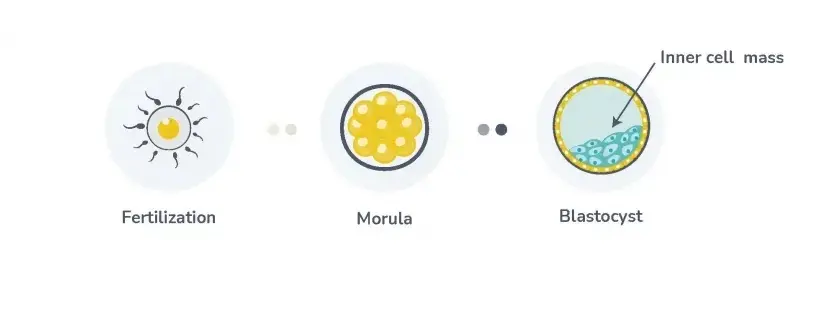Blastocyst Culture
Blastocyst culture involves keeping the embryos at the laboratory until day 5 or 6 of development, when they reach a stage that is known as blastocyst. Blastocyst culture facilitates the selection of the embryos with the best implantation potential to be transferred resulting in increased implantation rates, clinical pregnancy rates and has reduced high order multiple pregnancy rates.
Blastocyst Grading
After fertilization, the embryo which develops from the fertilized egg goes through various stages of development. A normal pattern of embryo development is outlined below:
• On day 2: 2-4-cell stage
• On day 3: 6-8-cell stage
• On day 4: morula
• On day 5/ 6 : blastocyst ( trophectoderm / inner cell mass)
Blastocyst grading or quality is determined by evaluating the external appearance of the blastocyst. As previously described the blastocyst has 2 distinct cell layers. The outer rim of cells referred to as the trophectoderm which develops into the placenta and the inner cell mass which is made up of stem cells which ultimately develop into the baby. Grading of the blastocyst is an imperfect science. Blastocysts that have been assigned a high grade/ top quality do not necessarily result in pregnancy. However, the best embryos will survive to the blastocyst stage and by virtue of the fact that they survived to day 5, day 6 indicate that they have the best implantation potential.
Blastocyst Transfer
The final stage of the process is the transfer of the blastocyst to the womb. A soft flexible catheter containing the embryo is gently inserted through the cervical canal into the uterus under ultrasound guidance. The catheter is then gently removed and the embryologist will check the catheter to ensure that the blastocyst has not been retained in the catheter. Bed rest is not advised post embryo transfer.



